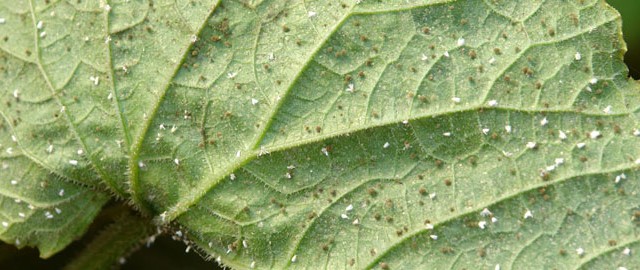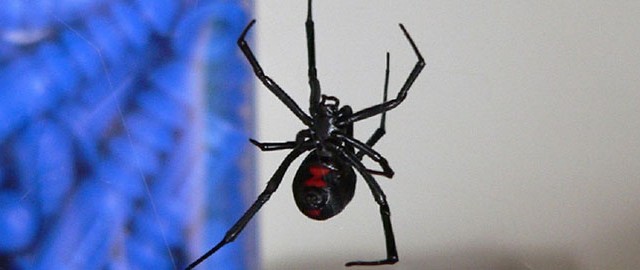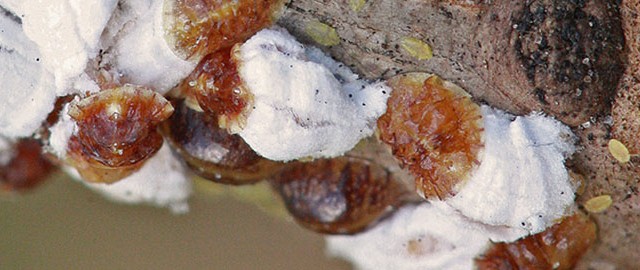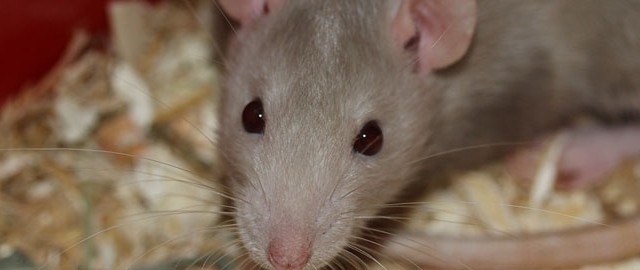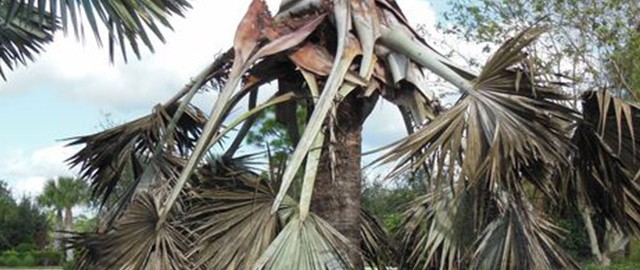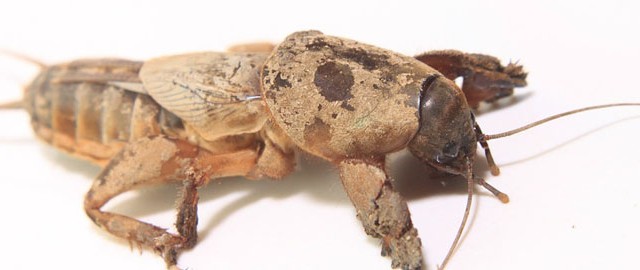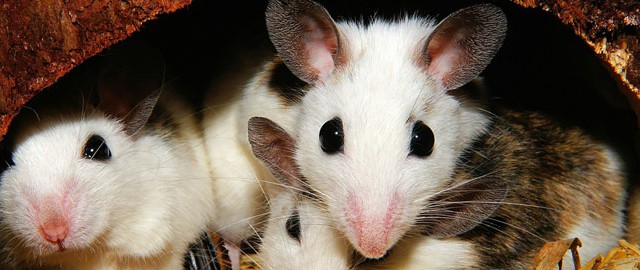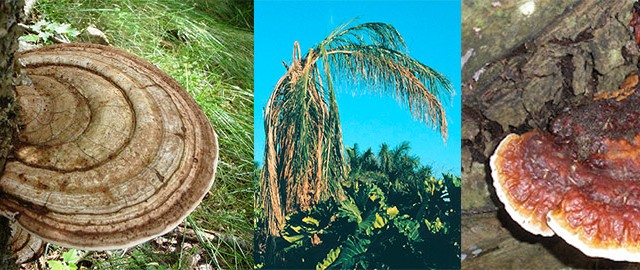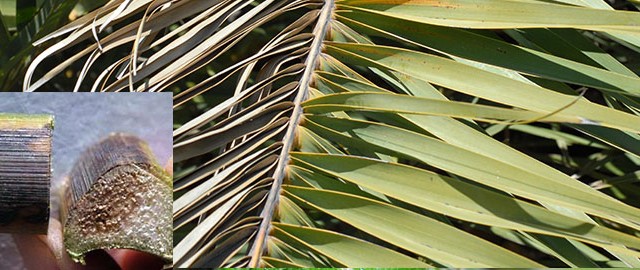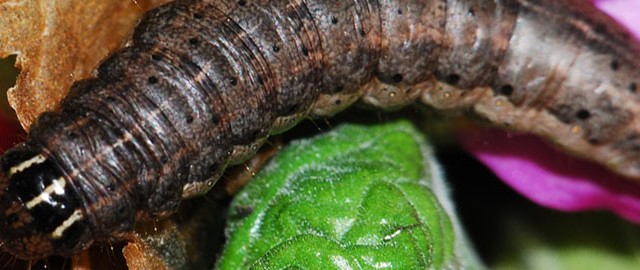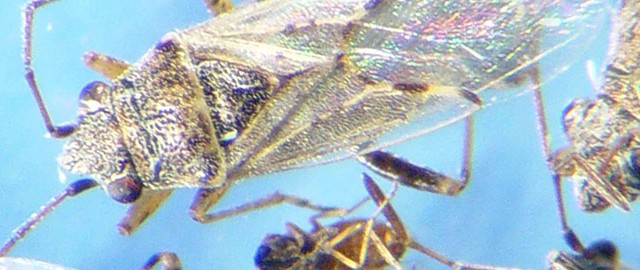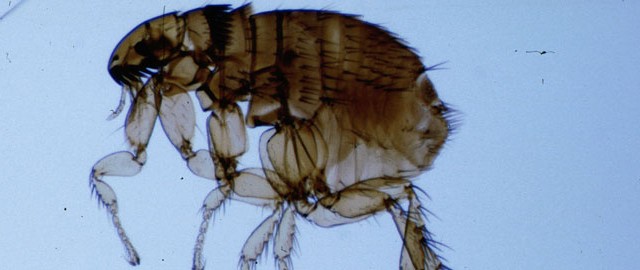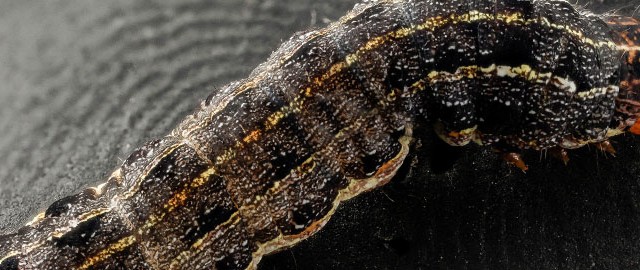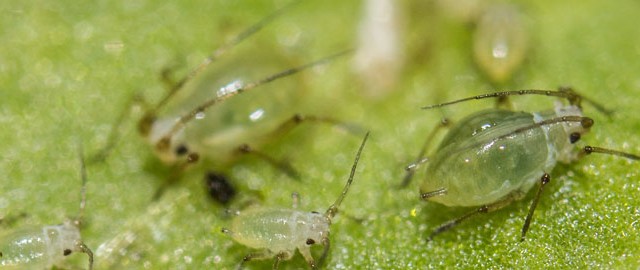Pest Gallery
- Date
- December 12, 2014
The most important whiteflies in Florida are citrus whitefly (Dialeurodes citri), the cloudy-winged whitefly (D. citrifollii), the wooly whitefly (Aleurothrixus floccosus), and citrus blackfly (A. woglumi). Whiteflies are dependent on new growth for their development and reproduction; consequently, they are active in citrus only during periods of flush. Large populations of these insects can deposit considerable volumes of honeydew, leading to sooty mold accumulation. These insects are constantly present in most groves in very low numbers and are normally under good biological control by various specialist parasitoids and generalist predators. Populations are rarely heavy enough to warrant treatment unless biological control has been disrupted. Serious infestations of whiteflies are an indication that management practices should be reviewed.- Date
- December 10, 2014
The body of the female, consisting of two regions (cephalothorax and abdomen), is typically shiny black with red markings. The red is usually an hourglass-shaped mark on the underside (venter) of the abdomen, but this may be reduced to remnants. Usually there is a single red spot just behind the spinnerets, sometimes a row along the back. There is much variation in body color with southern and western specimens being more strikingly marked than northern and eastern ones. The male has the abdomen narrower, with white lines along the sides which is shown by immatures as well. Young spiderlings are orange and white, and acquire more black in later developmental stages (instars) until some have little or no red except the hourglass markings. Immatures have the abdomen gray with white curved stripes. The body length of the female is about 3/8 inch and that of the male is about 3/16 inch, but sizes within different geographical populations can vary widely. There are more than 25 Latrodectus species world wide. Contrary to common belief, the female does not consume the male in most situations, except when held together in cages from which the male cannot escape. Examination of the genitalia is […]- Date
- December 12, 2014
Sod webworms are caterpillars of small brown to dull gray moths. Webworms grow to a length of nearly 3/4 inch and vary in color from pinkish white to yellowish brown with a light to dark brown or black head. They are covered with fine hairs. The moths have a wingspan of about 3/4 inch. They fold their wings closely about their bodies when at rest and have a prominent forward projection on the head. Moths hide in shrubbery or other sheltered spots during the day. They fly over the grass in early evening. The female scatters eggs over the lawns as she flies. Sod webworms feed only at night. Damaged grass blades appear notched on sides and are chewed raggedly. Irregular brown spots are the first signs of damage. Large areas of grass may be damaged severely. A heavy infestation can destroy a lawn in only a few days. Insecticide application should be timed for treatment during early evening hours when caterpillars begin feeding on the surface of the turf.- Date
- December 10, 2014
Silverfish are found in basements, kitchens, sinks, bathtubs, in bookcases, on closet shelves, behind baseboards, wallpaper, window or door frames, wall voids, and sub-floor areas. Because they molt during their adult lives their cast skins may be a useful detection too. Silverfish diets are high in protein, sugar, or starch, including cereals, moist wheat flour, starch in book bindings, and paper on which there is glue or paste. Silverfish can damage book bindings, wallpaper, paper products and dry foods. They may eat holes, irregular shaped in the wallpaper to get to the paste. Silverfish may bite very small holes in various fabrics, including cotton, linen, and silk, even though they cannot digest either linen or cotton. Firebrats will feed extensively on rayon, whereas silverfish usually damage it only slightly. They may leave a yellowish stain on fabric. Outside, they may be found in nest of insects, birds, mammals, and under tree bark and mulch They can be found in wood shingles or sidings on houses, they may enter the home from these.- Date
- December 12, 2014
The most important armored scale pests in Florida are snow scale (Unaspis citri), Florida red scale (Chrysomphalus aonidium), purple scale (Cornuaspis beckii), Glover’s scale (Lepidosaphes gloveri), and chaff scale (Parlatoria pergandii). Important soft scale insects include Caribbean black scale (Saisseta neglecta), brown soft scale (Coccus hesperidium), and Florida wax scale (Ceroplastes floridensis). Pest management of both armored and soft scale insects in Florida citrus is based on highly successful action of native and introduced exotic natural enemies, including predators, parasites, and pathogens. These relatively specific natural enemies co-exist with their hosts in the citrus grove under most conditions and can respond to suppress pest numbers when they periodically increase in individual groves. Thus, scale insects should not be considered key pests in development of seasonal pesticidal programs. However, there are conditions under which natural enemies may not function well. It is in these cases that scale insects achieve importance in our overall IPM program. Factors that are most often responsible for increases in scale populations are: a) weather conditions that disrupt biological control; b) movement of the pest to groves where natural enemies do not occur; and c) disruption of natural enemies by other practices, particularly the repeated use of […]- Date
- December 10, 2014
Also known as the Black Rat, Ship Rat, & here in Florida, the Fruit or Citrus Rat. This is the only rat we have to worry about here in Orlando. All of the rat photos you see on this website are from Roof Rats. I have never encountered a single Norway Rat down here. Roof rats are usually gray to slightly brown in color. Adults are typically 8 inches long, with a 9 inch long tail. The tail is long, dark, and scaley. Roof rats prefer warmer, more tropical climates. Roof Rats get their name because they spend about 90% of their time above ground. The live in trees, run on power lines, the tops of fences, and they really love to live in the attics of houses. Females have 4-6 litters per year, with 6-8 young per litter. They are fully weaned within a month, and sexually mature in as little as two months. They don’t live very long in the wild, seldom more than a year. Roof Rats are nocturnal, which is why you hear them scampering in your attic in the middle of the night.- Date
- December 12, 2014
Mole crickets are light brown, up to 1 1/2 inches long, have short, stout forelegs, spade-like feet, and large eyes. The young resemble the adults except that they are much smaller, have no wings and are sexually immature. Adults lay eggs in underground cells in the spring. The eggs hatch in 2 to 4 weeks, depending on the weather. Nymphs feed and grow through the summer, and mature into adults in the fall. Mole crickets spend the winter deep in the soil but come to the surface to feed during warm periods. Adult crickets leave the soil on warm spring nights to fly around, sometimes in huge numbers, looking for mates and egg-laying sites. There is one generation per year, and most adults die by early summer. Two generations per year have been reported in isolated coastal areas. The most damaging species of mole crickets feed on grass beneath the soil’s surface. Both young and adults burrow beneath the soil and make small tunnels. Mole crickets will build up in an area and completely destroy the grass, leaving bare ground if left untreated.- Date
- December 12, 2014
Citrus mealybugs (Planococous citri) are normally under good biological control by a complex of natural enemies in citrus. Their waxy covering, sedentary lifestyle, and preference for feeding in concealed locations make them very difficult to kill with insecticides. Only the most toxic materials have appreciable efficacy against mealybugs, materials that also pose risks to the environment and are most likely to disrupt biological control of other pests. Consequently, treatment is warranted only in cases of severe infestations, or when the fruit itself is attacked. Systemic materials give superior control while minimizing impacts on beneficials, but may not act quickly enough to prevent damage when high populations are established.- Date
- December 10, 2014
The House Mouse is commonly known, but rarely seen here in Orlando. Many people call me claiming to have seen mice, when they have in fact seen juvenile Roof Rats. You must remember that mice are very small, less than an ounce in weight. They exhibit behaviors similar to rats. They are nocturnal, like to live in homes, and destroy food and property with their chewing.

